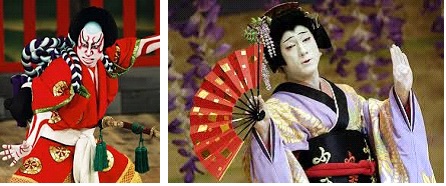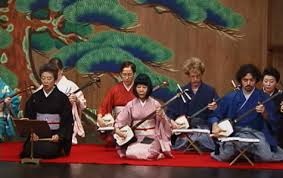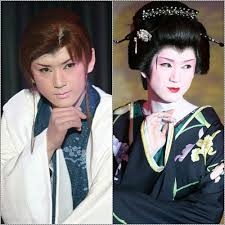
Drama and histrionic define the Kabuki dance form, which is native to Japan. In the ancient Edo–period ranging from 1600–1868, drama and theatre were the prominent avenues of entertainment. Noh, Bunraku and Kabuki were the three important streams of presentation. Out of these, Kabuki was the most spectacular and loud with colourful costumes and garish makeup. Dramatic nuances were accompanied by music and mime. Underlying themes of the dramatization were the Buddhist and Confucian school of thought. Over a period of time, performers had changed from women to men impersonating as women. The art of performing Kabuki in various styles continued with the families of the actors. Today, modern troupes are formed and trained to perform the Kabuki style. The enactment of the Edo–period classical Kabuki is being kept alive by merging it with modern techniques. Kabuki has been designated as a masterpiece by the UNESCO in 2005. Let us learn more about this dance.
Origin of Kabuki is traced back to the early 17th century. A female dancer named Okuni is credited with its invention. Okuni and her troupe of wandering female performers danced to entertain the common masses. Around 1629, women were banned from performing as they were also involved in prostitution and the swagger was of a suggestive nature. After the ban, young men performed by impersonating as women. Around 1652, it was again suppressed on the basis of moral grounds. Eventually, older men began performing Kabuki. The nuances became subtle and sophistication evolved. Kabuki also gained artistic values from the elegant Noh theatre and Bunraku puppet shows. Onnagata, a group of male actors emerged to play the Kabuki. The theatre and drama element has been interwoven with the exaggerated and stylized bodily movements of the Onnagata performers to an extent that it is now looked upon as a dance form, namely the Kabuki dance form.

Kabuki means to sing, dance and act and is performed by men. Onnagata is the word used to describe them. The essence of the performance depends on the actor’s skill. Aragoto and Wagoto are the two methods of performance. Aragoto is about the rough style of fierce grappling akin to Sumo wrestling. Wagoto style is about the tiffs and quarrels between young men and their lovers with tender and humorous tones. The portrayal goes on for long durations, sometimes about four hours. Nowadays, the performances are supplemented by sound and light effects and deft style is perfected by trained actors of new generation.

Shamisen is the most important musical instrument in Kabuki, which is accompanied by drums, flutes, percussions and the dramatic sound of two wooden blocks or clappers struck together.

In Kabuki, men play both the male and female character. The female character wears the kimono tied by a sash or obi. Pleated hakuma trousers are also worn by the performers. A broad belt is tied around the waist to show a straight midriff which is considered as a sign of beauty. The quality of costume depends upon the scenes being enacted. Appropriate costume, elaborate wigs and articulate make–up are a very important part of characterization of the actors and the theme.

Okuni, a shrine maiden is credited with invention of earlier ‘colourful’ Kabuki. This form became associated with prostitution and was banned for women. Thus Onna Kabuki (by women) was replaced by Wakashu Kabuki (by young men). This was also banned on moral grounds as it was an art of female impersonation developed into a theatrical role. Eventually, older men began playing the Kabuki as both male and female characters.

G Kowledge of | 0 Comments >>
0 Comments
Leave Comment
Your email address will not be published. Required fields are marked.